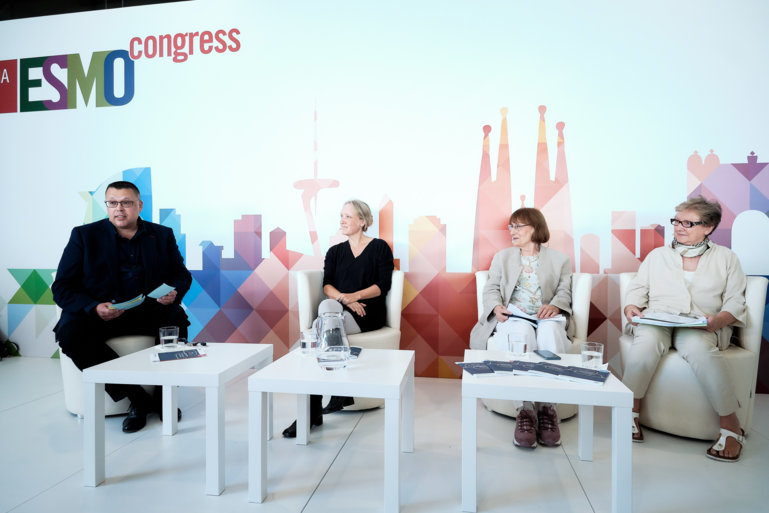A news ESMO Patient Guide presented at ESMO 2019
Is pain a consequence of tumour growth or a signal that treatments are not effective? Should I ever find relief from it? Or should I tolerate it? These are some of the most frequently asked questions from patients with cancer and their families, which the new ESMO Patient Guide on Cancer Pain Management aims to address. The print booklet will be presented during the Special Session ‘Coping with cancer pain: ESMO patient guide on cancer pain management’ tomorrow at the ESMO 2019 Congress (12.00 – 13.00, CC4 Foyer), which will also focus the debate on the importance of patient centricity, shared decision-making and patient advocacy.
Pain represents a common cancer experience across all stages of disease, affecting more than 60% of patients with advanced, metastatic or terminal disease. It is normally due to the cancer itself, the cancer treatment, or a combination of both.
Living with pain may lead patients to be concerned and distressed; however they can play an active role in its management.
"Although patients and their relatives end up being familiar with cancer-related pain, they often underestimate that good communication with their doctors helps to ensure that pain is appropriately assessed and, as a result, relieved,” explains Dr Carla Ripamonti from Istituto Nazionale dei Tumori di Milano, Milan, Italy, who will take part in the session. Pain is routinely assessed as part of cancer care via different assessment scales, and patients may be asked to grade their pain on a numerical scale (e.g. 0–10, with a score of 0 for no pain and 10 for the worst pain). "It is crucial to inform patients that the choice of treatment depends upon the type and severity of their pain and encourage them to describe accurately what they feel. Today there are multiple options to relieve pain, but some taboos still remain regarding the use of opioids and their potential side-effects or impact on survival.”
The Patient Guide, designed for patients in the first instance, may also be used by healthcare providers to engage with their patients. "The content of this guide was developed on the basis of the ESMO Clinical Practice Guidelines for medical oncologists,” highlights the session’s speaker, Dr Antje Koller from FHS St. Gallen, Switzerland. "For this reason, it may also be used by healthcare providers as well to guide patient education or even clinical practice.” According to Koller, one of the key messages from the booklet is that patients should not suffer in silence. "They should be aware that their doctor already has a plan B for the treatment of pain in case plan A does not work. The guide provides support to healthcare providers to deliver other important messages to their patients, including that if a treatment does not work, something must be changed, that pain medication may have unwanted effects that can be handled, and that wellbeing is important for treatment success.”
This year in its third edition, the Special Session on Patient Guides has become an annual event showing the commitment of medical professionals to get closer to their patients. "The ESMO Patient Guide on Cancer Pain Management is an authoritative and excellent tool for understanding the various types of cancer pain and how to cope with it,” comments Kathi Apostolidis from the European Cancer Patient Coalition, Brussels, Belgium, who will join the talk. "The Patient Guide’s value lies in that it has been thoroughly reviewed and commented by real cancer patients with cancer pain experience, who collaborated with ESMO to share their experience.” Participation by representatives of patient organisations and individual patient advocates has proved instrumental for the successful review of the Guide content, because only they know the nature and impact of different types of cancer pain on their lives. "Patient involvement in the review of the Guide should be mandatory and complementary to that of healthcare professionals, as only patients live with the disease and its treatments", concludes Apostolidis.






